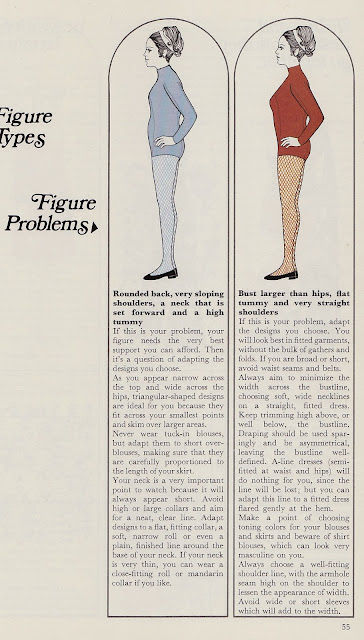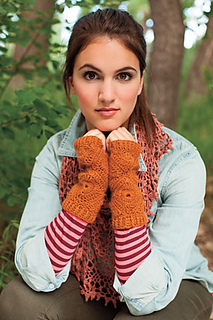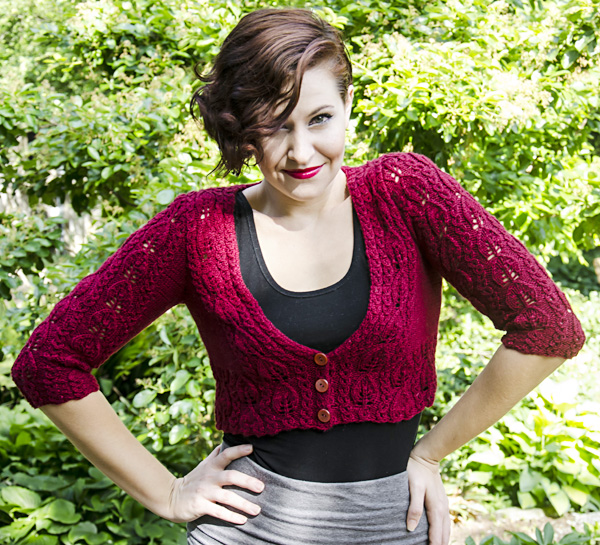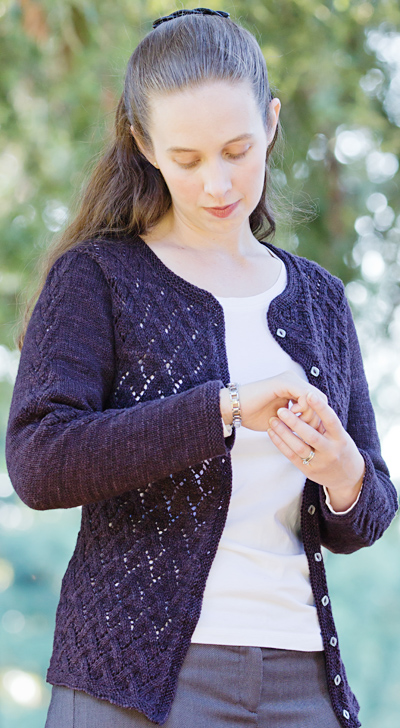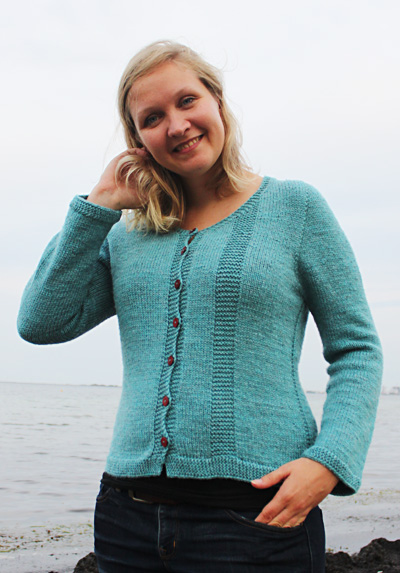This wraps up our review of the 1971 issue of Golden Hands magazine which I came across at a church rummage sale last week. In the last post we looked at the "Figure Types", and today we move on to the "Figure Problems".
I find it disturbing that the bodies with a large bust or large hips which we saw yesterday were considered "Figure Types", while the more specific combinations we see today are "Figure Problems". After all, I've heard plenty of women complain about their "Figure Type" large hip size (although fewer complain about large breasts). And, the description of our "Figure Problem" in orange above could fit a Sports Illustrated Swimsuit Edition model. While the advice in this article may still be generally right on target after 40 years, the good news is that our attitudes to our bodies have changed. There isn't any longer one ideal figure that we all strive towards, but rather an umbrella of body types each with its own assets and challenges.
My body happens to correspond remarkable with the lady in orange above, so I can compare my insights with Golden Hand's advice. It is generally good, but I have to disagree with their advice to wear wide necklines. In my experience, they only make my football player shoulders look even broader. Scoops and v-necks look best on me, because they interrupt my broad expanse of chest. That advice gas given for the large busted, but is even more important for those of us with the combination of a large rib cage and large breasts.
My body type is a less common variation of the human female, so for the 60% of you who carry more of your body weight through your hips and thighs, I refer you back to the last Golden Hands article for advice on "Large hips", as well as their general rules for dressing to appear taller and thinner.

